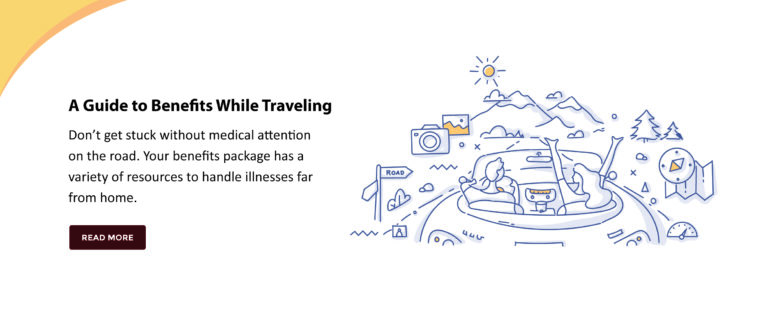The Importance of Preventive Care Screenings
[et_pb_section bb_built=”1″ fullwidth=”off” specialty=”off” inner_width=”auto” inner_max_width=”1280px”][et_pb_row][et_pb_column type=”4_4″ custom_padding__hover=”|||” custom_padding=”|||”][et_pb_text admin_label=”H1 Site Title – Text” _builder_version=”3.29.3″ background_color_gradient_direction=”1px” z_index_tablet=”500″ text_text_shadow_horizontal_length_tablet=”0px” text_text_shadow_vertical_length_tablet=”0px” text_text_shadow_blur_strength_tablet=”1px” link_text_shadow_horizontal_length_tablet=”0px” link_text_shadow_vertical_length_tablet=”0px” link_text_shadow_blur_strength_tablet=”1px” ul_text_shadow_horizontal_length_tablet=”0px” ul_text_shadow_vertical_length_tablet=”0px” ul_text_shadow_blur_strength_tablet=”1px” ol_text_shadow_horizontal_length_tablet=”0px” ol_text_shadow_vertical_length_tablet=”0px” ol_text_shadow_blur_strength_tablet=”1px” quote_text_shadow_horizontal_length_tablet=”0px” quote_text_shadow_vertical_length_tablet=”0px” quote_text_shadow_blur_strength_tablet=”1px” header_line_height_tablet=”2″ header_text_shadow_horizontal_length_tablet=”0px” header_text_shadow_vertical_length_tablet=”0px” header_text_shadow_blur_strength_tablet=”1px” header_2_text_shadow_horizontal_length_tablet=”0px” header_2_text_shadow_vertical_length_tablet=”0px” header_2_text_shadow_blur_strength_tablet=”1px” header_3_text_shadow_horizontal_length_tablet=”0px” header_3_text_shadow_vertical_length_tablet=”0px” header_3_text_shadow_blur_strength_tablet=”1px” header_4_text_shadow_horizontal_length_tablet=”0px” header_4_text_shadow_vertical_length_tablet=”0px” header_4_text_shadow_blur_strength_tablet=”1px” header_5_text_shadow_horizontal_length_tablet=”0px” header_5_text_shadow_vertical_length_tablet=”0px” header_5_text_shadow_blur_strength_tablet=”1px” header_6_text_shadow_horizontal_length_tablet=”0px” header_6_text_shadow_vertical_length_tablet=”0px” header_6_text_shadow_blur_strength_tablet=”1px” background_color_gradient_direction_tablet=”181px” background_color_gradient_start_position_tablet=”50px” background_color_gradient_end_position_tablet=”50px” box_shadow_horizontal_tablet=”0px” box_shadow_vertical_tablet=”0px” box_shadow_blur_tablet=”40px” box_shadow_spread_tablet=”0px” collapsed=”on” _i=”0″ _address=”0.1.0.0.0″ background_color_gradient_type=”linear” background_color_gradient_direction_radial=”center” background_color_gradient_overlays_image=”off” text_text_shadow_horizontal_length=”text_text_shadow_style,%91object Object%93″ text_text_shadow_vertical_length=”text_text_shadow_style,%91object Object%93″ text_text_shadow_blur_strength=”text_text_shadow_style,%91object Object%93″ link_text_shadow_horizontal_length=”link_text_shadow_style,%91object Object%93″ link_text_shadow_vertical_length=”link_text_shadow_style,%91object Object%93″ link_text_shadow_blur_strength=”link_text_shadow_style,%91object Object%93″ ul_text_shadow_horizontal_length=”ul_text_shadow_style,%91object Object%93″ ul_text_shadow_vertical_length=”ul_text_shadow_style,%91object Object%93″ ul_text_shadow_blur_strength=”ul_text_shadow_style,%91object Object%93″ ol_text_shadow_horizontal_length=”ol_text_shadow_style,%91object Object%93″ ol_text_shadow_vertical_length=”ol_text_shadow_style,%91object Object%93″ ol_text_shadow_blur_strength=”ol_text_shadow_style,%91object Object%93″ quote_text_shadow_horizontal_length=”quote_text_shadow_style,%91object Object%93″ quote_text_shadow_vertical_length=”quote_text_shadow_style,%91object Object%93″ quote_text_shadow_blur_strength=”quote_text_shadow_style,%91object Object%93″ header_text_shadow_horizontal_length=”header_text_shadow_style,%91object Object%93″ header_text_shadow_vertical_length=”header_text_shadow_style,%91object Object%93″ header_text_shadow_blur_strength=”header_text_shadow_style,%91object Object%93″ header_2_text_shadow_horizontal_length=”header_2_text_shadow_style,%91object Object%93″ header_2_text_shadow_vertical_length=”header_2_text_shadow_style,%91object Object%93″ header_2_text_shadow_blur_strength=”header_2_text_shadow_style,%91object Object%93″ header_3_text_shadow_horizontal_length=”header_3_text_shadow_style,%91object Object%93″ header_3_text_shadow_vertical_length=”header_3_text_shadow_style,%91object Object%93″ header_3_text_shadow_blur_strength=”header_3_text_shadow_style,%91object Object%93″ header_4_text_shadow_horizontal_length=”header_4_text_shadow_style,%91object Object%93″ header_4_text_shadow_vertical_length=”header_4_text_shadow_style,%91object Object%93″ header_4_text_shadow_blur_strength=”header_4_text_shadow_style,%91object Object%93″ header_5_text_shadow_horizontal_length=”header_5_text_shadow_style,%91object Object%93″ header_5_text_shadow_vertical_length=”header_5_text_shadow_style,%91object Object%93″ header_5_text_shadow_blur_strength=”header_5_text_shadow_style,%91object Object%93″ header_6_text_shadow_horizontal_length=”header_6_text_shadow_style,%91object Object%93″ header_6_text_shadow_vertical_length=”header_6_text_shadow_style,%91object Object%93″ header_6_text_shadow_blur_strength=”header_6_text_shadow_style,%91object Object%93″]
The Importance of Preventive Care Screenings
[/et_pb_text][et_pb_text _builder_version=”3.29.3″ background_color_gradient_type=”linear” background_color_gradient_direction=”1″ background_color_gradient_direction_tablet=”181px” background_color_gradient_direction_radial=”center” background_color_gradient_start_position_tablet=”50px” background_color_gradient_end_position_tablet=”50px” background_color_gradient_overlays_image=”off” text_text_shadow_horizontal_length=”text_text_shadow_style,%91object Object%93″ text_text_shadow_horizontal_length_tablet=”0px” text_text_shadow_vertical_length=”text_text_shadow_style,%91object Object%93″ text_text_shadow_vertical_length_tablet=”0px” text_text_shadow_blur_strength=”text_text_shadow_style,%91object Object%93″ text_text_shadow_blur_strength_tablet=”1px” link_text_shadow_horizontal_length=”link_text_shadow_style,%91object Object%93″ link_text_shadow_horizontal_length_tablet=”0px” link_text_shadow_vertical_length=”link_text_shadow_style,%91object Object%93″ link_text_shadow_vertical_length_tablet=”0px” link_text_shadow_blur_strength=”link_text_shadow_style,%91object Object%93″ link_text_shadow_blur_strength_tablet=”1px” ul_text_shadow_horizontal_length=”ul_text_shadow_style,%91object Object%93″ ul_text_shadow_horizontal_length_tablet=”0px” ul_text_shadow_vertical_length=”ul_text_shadow_style,%91object Object%93″ ul_text_shadow_vertical_length_tablet=”0px” ul_text_shadow_blur_strength=”ul_text_shadow_style,%91object Object%93″ ul_text_shadow_blur_strength_tablet=”1px” ol_text_shadow_horizontal_length=”ol_text_shadow_style,%91object Object%93″ ol_text_shadow_horizontal_length_tablet=”0px” ol_text_shadow_vertical_length=”ol_text_shadow_style,%91object Object%93″ ol_text_shadow_vertical_length_tablet=”0px” ol_text_shadow_blur_strength=”ol_text_shadow_style,%91object Object%93″ ol_text_shadow_blur_strength_tablet=”1px” quote_text_shadow_horizontal_length=”quote_text_shadow_style,%91object Object%93″ quote_text_shadow_horizontal_length_tablet=”0px” quote_text_shadow_vertical_length=”quote_text_shadow_style,%91object Object%93″ quote_text_shadow_vertical_length_tablet=”0px” quote_text_shadow_blur_strength=”quote_text_shadow_style,%91object Object%93″ quote_text_shadow_blur_strength_tablet=”1px” header_line_height_tablet=”2″ header_text_shadow_horizontal_length=”header_text_shadow_style,%91object Object%93″ header_text_shadow_horizontal_length_tablet=”0px” header_text_shadow_vertical_length=”header_text_shadow_style,%91object Object%93″ header_text_shadow_vertical_length_tablet=”0px” header_text_shadow_blur_strength=”header_text_shadow_style,%91object Object%93″ header_text_shadow_blur_strength_tablet=”1px” header_2_text_shadow_horizontal_length=”header_2_text_shadow_style,%91object Object%93″ header_2_text_shadow_horizontal_length_tablet=”0px” header_2_text_shadow_vertical_length=”header_2_text_shadow_style,%91object Object%93″ header_2_text_shadow_vertical_length_tablet=”0px” header_2_text_shadow_blur_strength=”header_2_text_shadow_style,%91object Object%93″ header_2_text_shadow_blur_strength_tablet=”1px” header_3_text_shadow_horizontal_length=”header_3_text_shadow_style,%91object Object%93″ header_3_text_shadow_horizontal_length_tablet=”0px” header_3_text_shadow_vertical_length=”header_3_text_shadow_style,%91object Object%93″ header_3_text_shadow_vertical_length_tablet=”0px” header_3_text_shadow_blur_strength=”header_3_text_shadow_style,%91object Object%93″ header_3_text_shadow_blur_strength_tablet=”1px” header_4_text_shadow_horizontal_length=”header_4_text_shadow_style,%91object Object%93″ header_4_text_shadow_horizontal_length_tablet=”0px” header_4_text_shadow_vertical_length=”header_4_text_shadow_style,%91object Object%93″ header_4_text_shadow_vertical_length_tablet=”0px” header_4_text_shadow_blur_strength=”header_4_text_shadow_style,%91object Object%93″ header_4_text_shadow_blur_strength_tablet=”1px” header_5_text_shadow_horizontal_length=”header_5_text_shadow_style,%91object Object%93″ header_5_text_shadow_horizontal_length_tablet=”0px” header_5_text_shadow_vertical_length=”header_5_text_shadow_style,%91object Object%93″ header_5_text_shadow_vertical_length_tablet=”0px” header_5_text_shadow_blur_strength=”header_5_text_shadow_style,%91object Object%93″ header_5_text_shadow_blur_strength_tablet=”1px” header_6_text_shadow_horizontal_length=”header_6_text_shadow_style,%91object Object%93″ header_6_text_shadow_horizontal_length_tablet=”0px” header_6_text_shadow_vertical_length=”header_6_text_shadow_style,%91object Object%93″ header_6_text_shadow_vertical_length_tablet=”0px” header_6_text_shadow_blur_strength=”header_6_text_shadow_style,%91object Object%93″ header_6_text_shadow_blur_strength_tablet=”1px” box_shadow_horizontal_tablet=”0px” box_shadow_vertical_tablet=”0px” box_shadow_blur_tablet=”40px” box_shadow_spread_tablet=”0px” z_index_tablet=”500″]
Many types of screenings and tests can catch a disease before it starts or in its early stages. This is critical for keeping health problems from developing into chronic conditions. Have you ever wondered where MyEvive, Blue Cross and Blue Shield, or your physician gets these guidelines? The United States Preventive Services Task Force (USPSTF), an independent panel of experts dedicated to primary care and prevention, reviews the effectiveness of preventive care and develops recommendations which our health and wellness programs follow for clinical preventive services. The guidelines also help us maintain compliance with the Affordable Care Act (ACA). A few examples of preventive care screenings are:
Wellness Visits: Your doctor checks your height, weight, heart rate, and blood pressure. Sometimes, with family history considered, the doctor may check your cholesterol and glucose levels as well.
Immunization Vaccines: Beginning in childhood, immunizations or “shots” are considered critical preventive care. Recommendations for adults include the flu, tetanus, diphtheria, and whooping cough. Ask your doctor for a recommended immunization schedule.
Colorectal Cancer Screening: A preventive screening recommended for men and women age 50 or older. Colonoscopies are standard for this screening but talk to your doctor about potential alternatives. The time between these screenings may also vary.
Breast Cancer Screening— October is Breast Cancer Awareness Month! About 1 and 8 adult U.S. women (about 12%) will develop invasive breast cancer in her lifetime according to Breastcancer.org. Mammograms are x-rays of the breasts to look for cancer. Most of the time, women can survive breast cancer if it is found and treated early enough. The average 5-year survival rate for women with invasive breast cancer is 90%. Around age 40, women should start talking to their doctors about when to get their first mammogram. From ages 50 to 74, women are advised to get a mammogram every two years.
Cervical Cancer Screening—Also known as a Pap Smear, a cervical cancer screening can help find abnormal or changed cervical cells before they become cancerous. How often women should be tested generally depends on age, but it’s always a good idea to check with your doctor. This type of screening is usually conducted in a women’s wellness exam.
Obesity Screening and Counseling— This screening could include reviewing your body mass index with you (BMI) and identifying other potential health risks. Obesity makes you more likely to have many health conditions such as heart disease, high blood pressure, diabetes, some cancers, osteoarthritis, and sleep apnea. Nutritional counseling is covered at 100% on the A&M Care Plans, and Naturally Slim is available to active employees with a BMI over 25 to address the needs of this screening.
Diabetes Screening—Diabetes is preventable, but once you have diabetes, it can only be managed-not cured. The USPSTF recommends screening for abnormal blood glucose as part of cardiovascular risk assessment in adults aged 40 to 70 years who are overweight or obese. A healthy diet and regular exercise to maintain a healthy weight are essential to diabetes prevention. Depending on your risk for diabetes and family history, your doctor may test you and recommend regular testing.
Depression Screening—Depression is an illness that can affect your thoughts, moods, and activity level. The USPSTF recommends depression screening for adolescents and the general adult population. ComPsych GuidanceResources, Well onTarget, and MyEvive all have resources on handling stress and preventing depression, available to all employees and retirees of the A&M System.
Preventive care services are fully covered by your health insurance plan only when you receive these services, screenings, and tests from providers in your plan’s network. If you receive these services from providers who are not in-network, you will likely be responsible for some or all of the cost.
Source: Pacific Source Health Care, The United States Preventive Services Task Force, and BreastCancer.Org
[/et_pb_text][et_pb_post_nav _builder_version=”3.29.3″ in_same_term=”off” background_color_gradient_type=”linear” background_color_gradient_direction=”1″ background_color_gradient_direction_tablet=”181px” background_color_gradient_direction_radial=”center” background_color_gradient_start_position_tablet=”50px” background_color_gradient_end_position_tablet=”50px” background_color_gradient_overlays_image=”off” title_text_shadow_horizontal_length=”title_text_shadow_style,%91object Object%93″ title_text_shadow_horizontal_length_tablet=”0px” title_text_shadow_vertical_length=”title_text_shadow_style,%91object Object%93″ title_text_shadow_vertical_length_tablet=”0px” title_text_shadow_blur_strength=”title_text_shadow_style,%91object Object%93″ title_text_shadow_blur_strength_tablet=”1px” box_shadow_horizontal_tablet=”0px” box_shadow_vertical_tablet=”0px” box_shadow_blur_tablet=”40px” box_shadow_spread_tablet=”0px” z_index_tablet=”500″ /][/et_pb_column][/et_pb_row][/et_pb_section]

